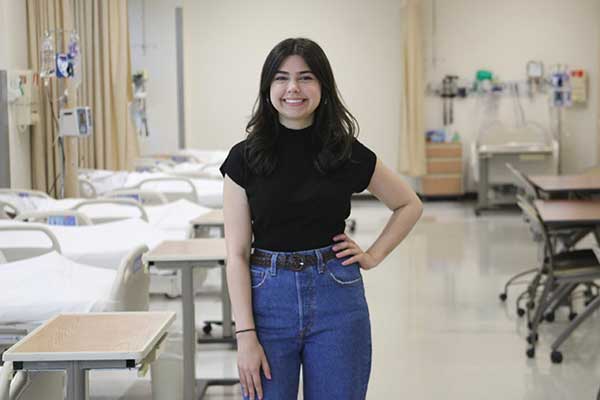
Talon’ted Undergraduate Researcher - Christopher Dargan
KENNESAW, Ga. | Mar 11, 2024
Christopher Dargan is a senior undergraduate student pursuing his bachelor’s degree in computer science.
Dargan works with Dr. Md Abdullah Al Hafiz Khan, an assistant professor of computer science at KSU, in the Ubiquitous Data Mining Lab (UDM) to decipher thoughts through brain waves.
Q: What is your hometown and high school?

A: I am from Hinesville, Georgia, and I graduated from Liberty County High School.
Q: What is your major and class year?
A: My major is computer science, and I am a senior.
Q: Why did you choose to attend KSU?
A: I chose to attend KSU because of the computer science department and because of the opportunistic location of the school. I didn't want to be directly inside the city, but KSU is still close enough to Atlanta for it to not be inconvenient.
Q: What motivated you to pursue your degree?
A: Computer science is such an innovative field that combines critical thinking with creative problem solving, which is what drew me in.
Q: What are you working on right now?
A: The proper title for it is Language, Modeled, Enhanced Thought Detects Conversion. I’m trying to predict when a person thinks of a specific letter using machine learning. It decodes the brain’s signals or small electric activity, and I am working on finding the pattern of someone thinking of specific letters. It will essentially allow someone to communicate through their thoughts.
(My research) could help people who aren‘t able to communicate through traditional means express their thoughts, which is something that used to be impossible. That’s one of my favorite parts of research is trying to find a creative solution to the problem.
Christopher Dargan
Senior Computer Science Major
Q: And are you doing it through a lab or with a mentor?
A: I was initially accepted through the Thrive Program and did that for one semester. Then I did the Summer Undergraduate Research Program (SURP), all of which was under Dr. Khan, who is an assistant professor in the computer science department here at KSU.
Q: What does an average day in the lab look like for you?
A: Right now, I am just trying to build the machine learning model and am looking at past research to see how others have approached this idea. So, I’m basically preprocessing the data that has been previously used and gathering inspiration for my own work. Eventually, I will be testing my findings, but until then that’s my typical day.
Q: And where do you work on it?
A: The labs in the Atrium building on the Marietta campus.
Q: Why do you feel that your research is important?
A: It could help people who aren‘t able to communicate through traditional means express their thoughts, which is something that used to be impossible. That’s one of my favorite parts of research is trying to find a creative solution to the problem.
Q: What would you say your greatest challenge has been?
A: Processing the data. With machine learning, it’s hard to choose the correct data to feed the algorithm and the data must be processed and cleaned up. Our research does the cleaning from the ground up which is helpful, but it’s still complicated.
Q: What does cleaning the data entail?
A: We have an external headset that records the electrical activity in the brain, so once we get the raw data signal from that, we have to filter the data to remove any noise that it might have picked up like your eyes blinking. Then from there, we can extract useful characteristics of the signal to try and uniquely identify each signal to a specific letter.
Q: What would you say is your favorite thing you've learned through this?
A: I would say the techniques of signal processing, because it doesn't necessarily just apply to what I'm researching right now. There is a concept called Fourier analysis, which is the study of simplifying general functions by using the sums of less complicated trigonometric functions. Typically, its used to represent a signal in the frequency domain rather than the time domain. Once a signal has been translated into the frequency domain, you can then filter it and remove noise, and it provides insight into the data. Say there was a certain the frequency range in your signal, the Fourier analysis would reveal it to you.
Q: What are you working toward?
A: I would say improving the accuracy of the model so we can eventually detect letters and eventually words with a wide range of people because we are only using specific people right now. So, I am working toward a more accurate model and a more robust system.
Q: What would you say your career path is?
A: I know I want to go into software engineering and development and eventually work independently, but that is as far as I’ve gotten.
Q: What advice would you give to current students who may be curious about getting involved in research?
A: Try to do something you’re passionate about. While research looks incredible on a résumé, don’t let that be the only driving force. Research is one of the best ways to spark your curiosity, so seek opportunities that you care about and just go for it.
— Alyssa Ozment
Photo by Darnell Wilburn
















